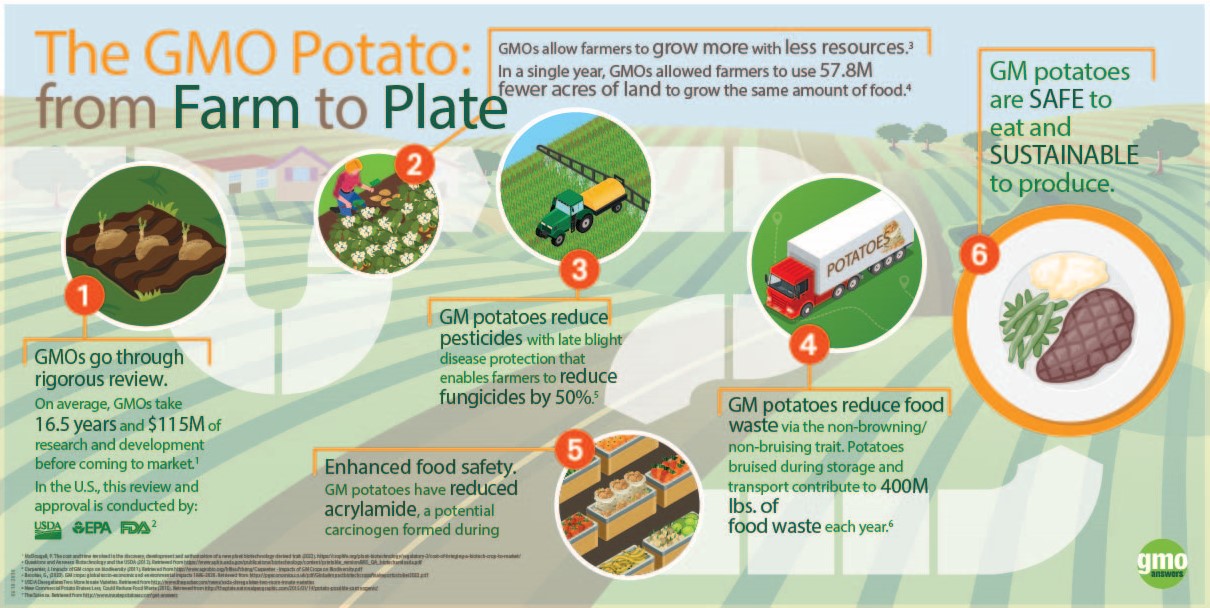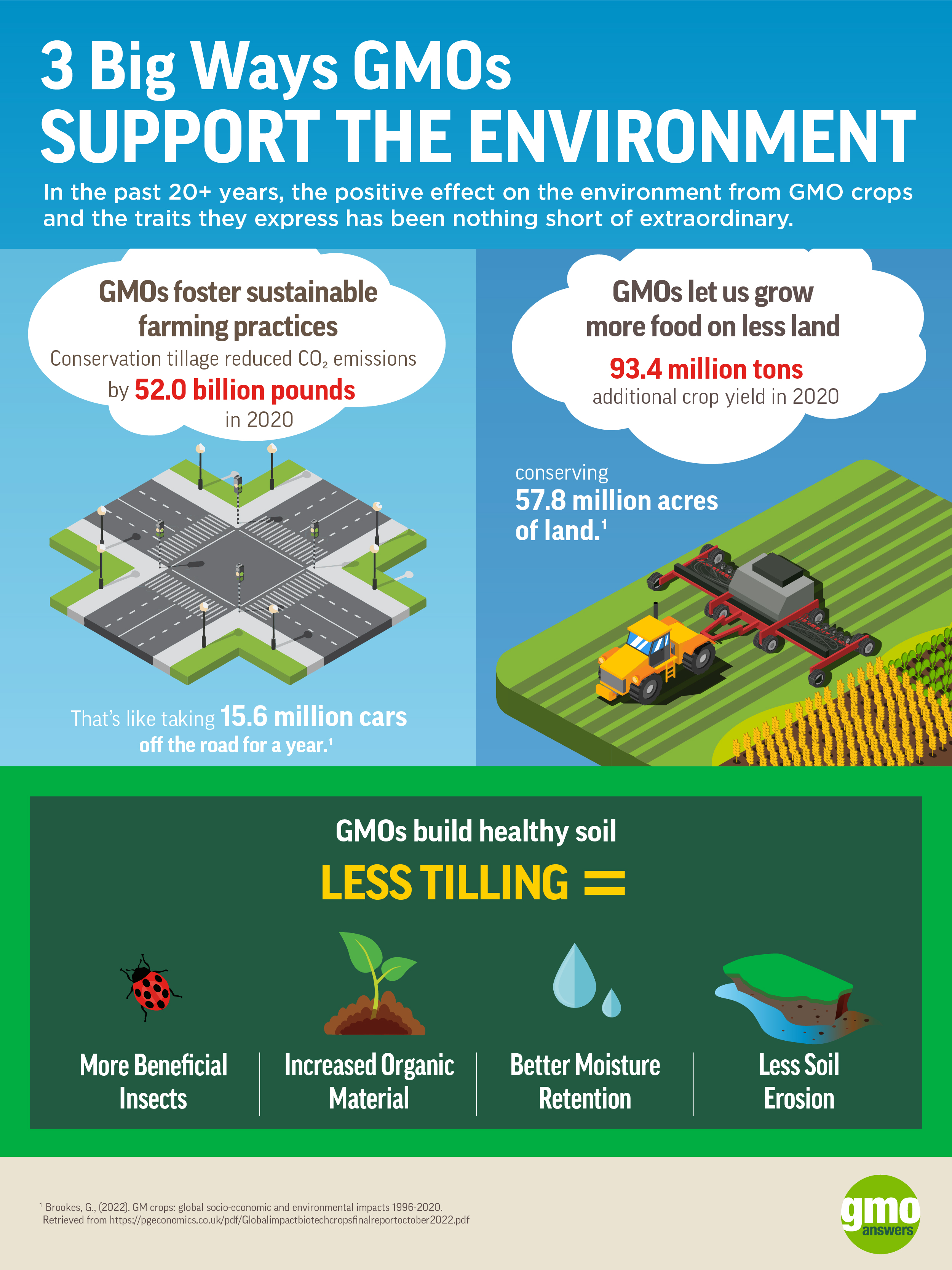GMO Crops
Article
From independent bloggers and local communities to large organizations, seems everyone has a view on GMOs. Which sources, figures, and facts are true? Which one's aren't? Here are a few popular myths that have been proven false or common misrepresentations of GMOs on the market.
Article
Pink Pineapple - What The Fruit??
Have you seen pictures of a pink pineapple floating around and wondered "what in the world is that?" Well, here is the latest on everything you need to know.
Infographics and Downloadables
Top 10 Consumer Questions About GMOs Answered
The following are the Top 10 consumer questions and answers have about GMOs, based on Internet searches, traffic to the GMO Answers website, and in-person events.
GMO Crops GMOs in Groceries GMOs & Farmers ConsumersInfographics and Downloadables
Article
25 Things to Know From 25 Years of GMOs
In honor of the 25th anniversary of GMOs, we’ve developed a list of 25 things to know about GMOs, from current and future GMOs to GMOs in development that could solve problems like malnutrition and blindness.
Article
Golden Rice – GMOs’ Fight Against Malnutrition and Saving a Child’s Gift of Sight
Most people think of oversized fruits and vegetables when they think about the applications of GMOs in agriculture. However, there are endless, live-changing applications of GMOs. Learn about the GMO crop that is helping to prevent irreversible childhood blindness via the addition of Vitamin A.
Answer
A: You mention hormones being active at parts per billion concentrations. So, what I think that you are asking is - if hormones are active at parts per billion and glyphosate is present at higher concentrations (i.e., parts per million) why isn’t glyphosate causing problems? Perhaps the best answer is that the activity (either a pharmacologic action or a toxic action) of chemicals (either a naturally occurring chemical such as a hormone [yes hormones are chemicals] or man-made chemicals [such as glyphosate]) varies considerably between chemicals and is dependent on how much of a chemical rea [...]
GMO CropsQuestion
Hi! I would just like to verify that the crops listed are the only crops currently genetically modified in the US as of April 2019. Thank you!
Submitted by:
Answer
Expert response from Community Manager
Tuesday, 04/06/2019 16:44
The 10 genetically modified crops available today include: alfalfa, apples, canola, corn (field and sweet), cotton, papaya, potatoes, soybeans, squash and sugar beets.
Below is a table outlining what year the ten crops became commercially available:
|
Squash |
1995 |
|
Cotton |
1996 |
|
Soybean |
1995 |
|
Corn |
1996 |
|
Papaya |
1997 |
|
Alfalfa |
2006 |
|
Sugar beets |
2006 |
|
Canola |
1999 |
|
Potato |
2016 |
|
Apple |
2017 |
We hope this answers your question, if you have any other questions about GMOs or biotechnology, please ask!
Answer
Q: What is the process of the production of GMO wheat? Flowchart?
A: There is no GMO wheat commercially available anywhere in the world. There are just 10 GMO crops commercially available in the U.S. today. Those crops are alfalfa, apples, canola, corn (field and sweet), cotton, papaya, potatoes, soybeans, squash and sugar beets. However, posted below is a five-minute video that offers a great visual illustration of how GMOs are made. We hope this answers your question, if you have any other questions about GMOs or biotechnology, please ask here! [...]
GMO CropsPagination
- Page 1
- Next page





